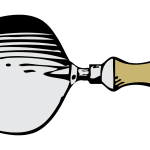Subluxation, a term rooted in the fields of chiropractic and osteopathy, refers to a misalignment or partial dislocation of a joint, often resulting in a cascade of physiological and structural changes. Gaining an understanding of subluxation, its causes, and its effects, equips individuals with knowledge that can influence their health decisions. This guide provides valuable insight into effective management strategies to aid in navigating this condition and optimizing musculoskeletal health.
Peeling Back the Layers: What is Subluxation?
At the heart of understanding subluxation is grasping the complexity of the condition itself. Subluxation is defined as an altered position of the vertebra and subsequent loss of function. This can occur anywhere in the body where two bones meet and form a joint. The exact nature of subluxation varies from person to person, influenced by numerous factors such as individual health, lifestyle, and previous injuries.
Tracing the Source: Causes of Subluxation
Subluxation can have a variety of causes, which typically fall into three primary categories: physical, chemical, and emotional. Physical causes include acute trauma like an accident or chronic issues such as poor posture. Chemical causes involve the influence of diet, drugs, and toxins. Emotional causes can stem from stress, anxiety, or other emotional traumas. Understanding these causes can lead to more personalized and effective management strategies.
Ripple Effect: Impacts of Subluxation
The impacts of subluxation reach far beyond the physical discomfort and can potentially affect numerous body systems. The misalignment can interfere with the nervous system’s communication, impacting the body’s ability to maintain equilibrium or homeostasis. The effect of a subluxation can manifest in various ways, including pain, inflammation, reduced mobility, and decreased function of the affected area.
Charting the Course: Management Strategies for Subluxation
Recognizing subluxation and its effects prompts the exploration of various management strategies. These can range from lifestyle modifications to therapeutic interventions, all aimed at realigning the joint and restoring optimal function.
Chiropractic Care
Chiropractic care is often at the forefront of subluxation management. Chiropractors use specialized techniques to apply controlled force and realign the joints, thereby reducing the impact of subluxation.
Lifestyle Modifications
Lifestyle modifications, including adopting an ergonomic workspace, regular physical exercise, and a balanced diet, can help manage and prevent subluxation. These changes promote a healthier musculoskeletal system, reducing the chances of subluxation and its impacts.
Physiotherapy
Physiotherapy can be a valuable tool in managing subluxation. Therapists use a variety of techniques, including exercises and stretches, to improve joint mobility and strength, ultimately aiding in the recovery process.
Mind-Body Practices
Mind-body practices, such as yoga or mindfulness-based stress reduction, can also support subluxation management. These practices promote overall well-being and can assist in managing the emotional or chemical causes of subluxation.
Understanding subluxation in its entirety involves recognizing its causes, effects, and potential management strategies. Armed with this knowledge, individuals are better prepared to navigate their health journey, reducing the impact of subluxation on their lives. Through informed decision-making and proactive care, optimal musculoskeletal health becomes an attainable goal.







